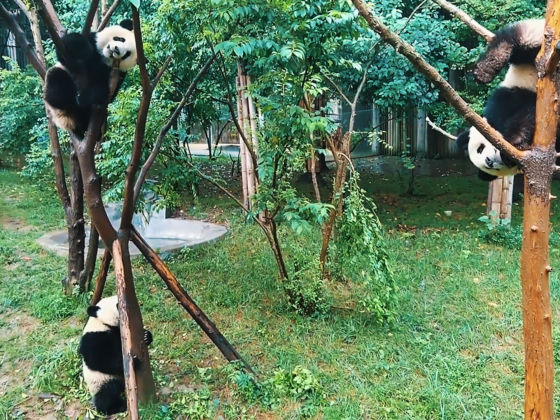Giant pandas are considered one of China’s national treasures. Native to south-central China, these bears number less than 2,000 in the wild and, despite their few natural predators, continue to be classified as a vulnerable species. They continue to be at risk due to loss of habitat combined with the fact that they don’t reproduce quickly.
A “normal” reproductive rate is one offspring every two years, and female pandas are only fertile for 2-3 days a year. It’s no wonder so many early conservation efforts failed (for lack of species understanding).
